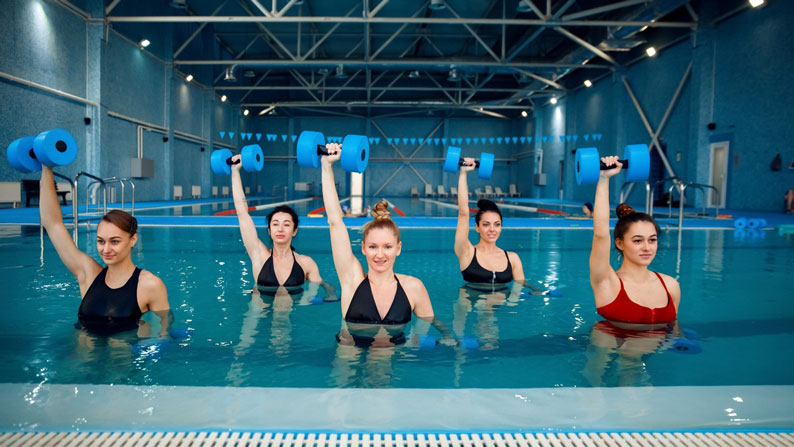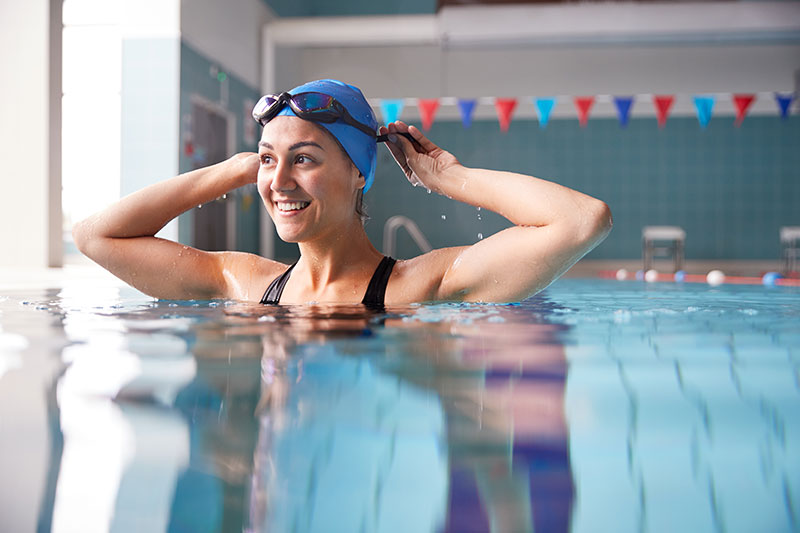Vein disease can affect anyone. A painful varicose vein makes it difficult to exercise. However, regular exercise is a great way to reduce varicose vein symptoms and prevent new ones from developing. Veins in your legs pump blood to the heart. With age, leg veins become weak. Blood pools as a result of weak valves lead to painful, and visible varicose veins. Exercise can improve circulation and pump blood upward in the leg veins. A varicose vein may indicate insidious vein disorders. Vein disorders can result in pain and dangerous blood clots if left untreated.
With specialists of Specialty Care Clinics, you can improve your vein health through surgical treatment or conservative methods, such as exercise that is vein-friendly.
Pool therapy alleviates the discomfort of varicose veins. The fact that you appear to weigh less when you’re underwater helps to reduce some of the pressure on your veins. Your body’s circulation improves with less pressure, which makes it easier for your veins to send blood to your heart more efficiently. Swimming is a low-impact workout that improves your flexibility.

VEIN-FRIENDLY POOL WORKOUTS YOU CAN TRY
Swimming Laps :- Your leg stays above your heart when you swim, which improves the blood flow from the legs to the heart and you will feel less strain. You can try backstroke, butterfly, or breaststroke. Lap swimming increases flexibility, boosts your balance and reduces fall risks.
Water aerobics :- The water pressure promotes more effective blood circulation. It includes water walking, bicep curls, leg lifts, and kickboard moves. Most exercises are performed at the shallow end of the pool.
Leg kicks :- By kicking your legs and holding onto a kickboard, you can still get the benefits of a pool workout.
Exercises in water :- You can perform jumping jacks or lunges or gentle jogs in the shallow end of the pool. If it is difficult, you can move into deeper water.
Bicycle your legs :– Start moving your legs as you are on a bike by holding on to the pool’s edge to keep yourself steady.
Lift water weights :– Water weights improve your muscle tone without placing much strain on your vein.
BENEFITS OF SWIMMING IF YOU HAVE VARICOSE VEINS
Strengthen vein and leg muscles :– When your leg muscles contract, blood flows through the veins in your legs. Blood can flow more easily through stronger muscles.
Improves circulation :– The water’s pressure forces the blood from your legs back toward your heart more effectively when you swim.
Reduce pain :– Swimming reduces the effect of gravity on the legs, which makes vein healing easier.
Prevention :– Swimming may help alleviate the painful symptoms of varicose veins and also prevent their occurrence by constricting any varicose veins that have not yet appeared on your skin.

TIPS FOR A SAFE WORKOUT
- Hydrate your body, and take frequent drinks.
- Increase your intake of vital nutrients that feed your muscles, such as calcium and magnesium, to avoid cramps and support lean muscle mass.
- Keep your clothing comfortable.
- During exercise, constricting your body, especially in the middle, can put greater strain on the veins in your lower legs and raise your risk of developing varicose veins.
OTHER THINGS YOU CAN DO
When you can’t exercise, there are still some things you can do to enhance your circulation and vein health.
- To help blood flow in the right direction, put on compression stockings.
- Elevating your legs will help you avoid blood clots and minimize swelling.
- To help the blood to return to the heart, rotate your ankles.
- To enhance circulation, you can elevate your calves or rock your heels back and forth. This will activate the calf pump muscle.
